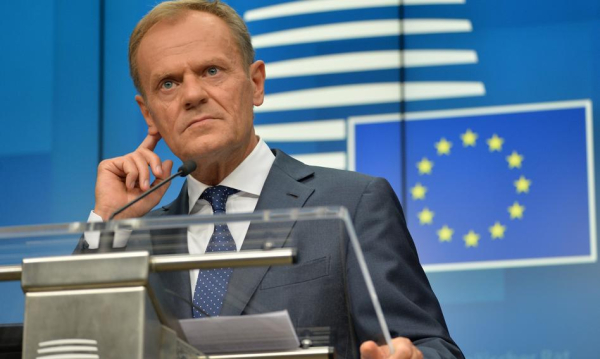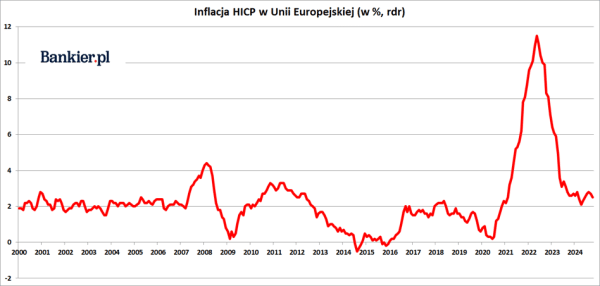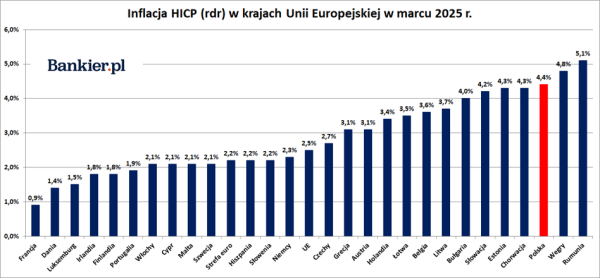The European Union has a new inflation leader. Unfortunately, Poland is in the top tier of this inglorious classification. In most EU countries, HICP inflation still exceeds the “acceptable” 2%.

In March 2025, HICP inflation in the European Union fell to 2.5% from 2.7% recorded in February. The result for the eurozone also amounted to 2.2% y/y, from 2.4% a month earlier.


Bankier.pl based on Eurostat data
The previous two months have seen a slight decline in inflation in the EU following its rebound observed at the end of 2024. Although the decline in the purchasing power of money is much slower than in 2021-23 (when it even exceeded 10% per year), the state of elevated HICP inflation – i.e. exceeding 2% – has been in force for almost four years now and there is no indication that this situation will change in the near future.
See alsoTake your first steps towards safe investments – read our guide to Treasury Bonds!
Inflation is not the same problem everywhere
In March 2025, 21 of the 27 EU countries had HICP inflation above 2%. Of course, some of these countries are not part of the eurozone and their central banks may have higher inflation targets than the European Central Bank. For example, in Poland it is 2.5% and in Hungary 3%. However, such a standard for a developed country is inflation of around 2% in the medium term.
In March 2025, Romania turned out to be the EU inflation leader, where HICP inflation fell from 5.2% to 5.1%. Hungary fell to second place with a rather surprising result of 4.8% compared to 5.7% recorded in February and January. Unfortunately, Poland jumped to third place, where HICP inflation was estimated at 4.4% compared to 4.3% in March. Croatia and Estonia (both 4.3%) came in right behind us, ahead of Slovakia (4.2%) and Bulgaria (4.0%).


Bankier.pl based on Eurostat data
In turn, the lowest HICP inflation in January was recorded in France (0.9%), Denmark (1.4%), Luxembourg (1.5%) and Finland and Ireland (both 1.8%). Only Portugal was below the 2% threshold. On the other hand, 14 EU economies were in the range from 2% to 4%. In total, 21 out of 27 EU countries had HICP inflation above 2%.
HICP inflation is a different measure of price growth than the most popular CPI indicator used by the Polish Central Statistical Office. We wrote about the differences between the indicators in the article “How does the Central Statistical Office measure inflation? Statisticians explain”. In short: both measures use a slightly different weighting system and take into account a slightly different range of expenses. It is also worth remembering that the readings of inflation indicators (including HICP) in individual countries are influenced by official price manipulations. This applies in particular to electricity and gas tariffs, as well as changes in VAT rates.






